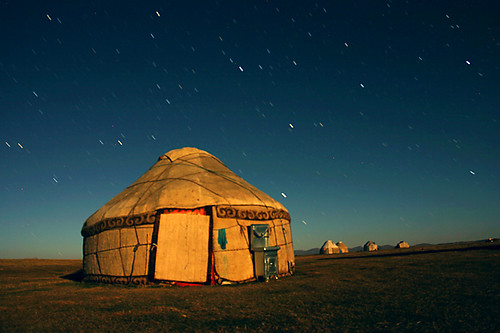
Friday, August 22nd, 2008
Bhakta-Tom, our fearless garden assistant, stonemason, and construction whiz, held an enlightening talk on alternative building design and how it is manifesting in our own community in the Workshop Extension in the Teaching Garden.
What are the keys and benefits of alternative housing designs, like the earthship and yurt? One who is so inclined can create a stable, eco-friendly design that acts as shelter for you and yours, for your animal population, and for other buildings like graineries and tool sheds.
Raising your own building from the grown up in a socially and envirnomentally responsible way is a first-class community builder.
The ethical responibilities to the environment include using lumber, stone, and clay from local sources, and in this similar vein, recycling and salvaging materials like metal and tires, like we are doing for the foundation for the Workshop Extension.
The wood we are using for the construction and the stone we are using for the Workshop floor also are coming from local sources in our community and surrounding small towns and villages.
The approach is simple: Take only what is needed to utilize. It's a K.I.S.S approach. Keep It Sweet and Simple.
Some practical examples of alternative housing include log-stacked homes, which traditionally use mixtures of dried moss and clay, wood ashes, lime, sand and chopped straw.
Here of course we are using a modified earthship design for the foundation of our Workshop, as mentioned above. Tires are a great renewable resource, and anyone of your friendly local tire stores are like a modern quarry, with plenty of free tires.
To fill the tires, 2.5 to 3 loads of dirt are needed to fill it, to a consistency of 300 lbs. It takes a lot of shoveling and smashing, but according to Bhakta-Chris, no service for the Lord is more blissful.
Tom is a goldmine of hands-on wisdom. Give em a hand of your own as he continues with the construction of our Workshop Extension in the Teaching Garden.





No comments:
Post a Comment